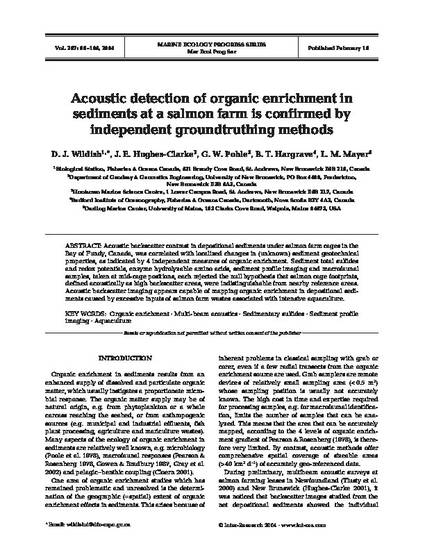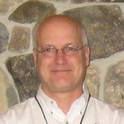
Acoustic backscatter contrast in depositional sediments under salmon farm cages in the Bay of Fundy, Canada, was correlated with localized changes in (unknown) sediment geotechnical properties, as indicated by 4 independent measures of organic enrichment. Sediment total sulfides and redox potentials, enzyme hydrolyzable amino acids, sediment profile imaging and macrofaunal samples, taken at mid-cage positions, each rejected the null hypothesis that salmon cage footprints, defined acoustically as high backscatter areas, were indistinguishable from nearby reference areas. Acoustic backscatter imaging appears capable of mapping organic enrichment in depositional sediments caused by excessive inputs of salmon farm wastes associated with intensive aquaculture.
Available at: http://works.bepress.com/lawrence_mayer/3/
